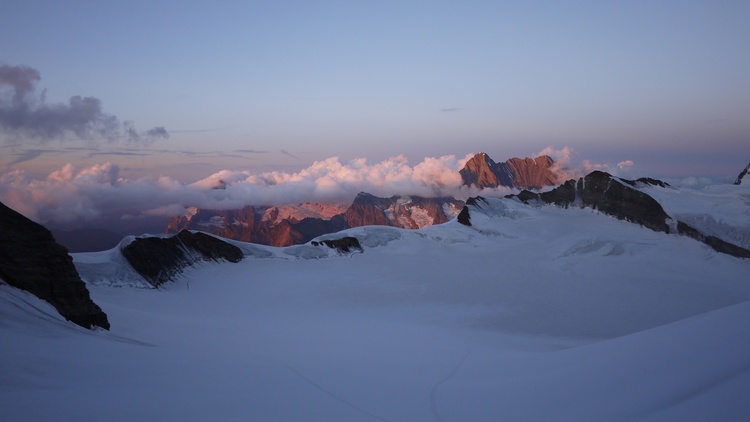Miratovac (pronounced "MurAtowvutzz") is very close to the Serbian-Macedonian border - so close you can see the border stations on the motorway a couple of kilometers away.
Let me give you a tour in a few photographs. First here's a view of the 'front door' of the camp, the view both staff and migrants see when they arrive:
Miratovac's 'front door' when I arrived for work in the morning.
Now, here's the view outward from the fence immediately to the right of the barriers that bring incoming refugees for scanning and paperwork checking:
Shot taken at sunset on New Years Eve.
And finally, a view of the camp taken from the same spot as the shot above, but approximately 180 degrees, to show you the route through the camp with services available along the path before you get to the exit at the end. What you don't see is the Remar tent at the end with their trademark hot tea and soup with a big tent where everyone can relax and get warm before they leave us:
"Main Street" of Miratovac, taken at sunset on New Years Eve.
In case you're wondering if the picture above is blurry because I'm a crap photographer, whilst that may be true in this case the blurring is deliberate: we don't take pictures of refugees which might allow any individual to be identified to protect them but also their friends and relatives still in their home countries who might face reprisals otherwise. In the middle-distance you can see refugees getting food (on the left) from the catholic and orthodox charities and on the right the DRC (Danish Rescue Committee) provides warm clothes and shoes to those who need them ( many do given the winter temperatures).
What do I do at Miratovac?
Naturally most of my time isn't spent taking pictures with my phone: We spend our time providing information for those who are coming through. Once again, my accent in pronunciation provides hilarity here just as it does at Presevo, and I'm rescued by the many Syrians who speak excellent English or other colleagues. I've also developed pretty impressive skills for charades: I know this because when those I speak/pantomime to pass what I'm "saying" along to others my Farsi/Arabic speaking colleagues tell me the information is generally correct.
I also take people to services: kids and their mothers to UNICEF for all sorts of things; many others to the DRC for clothing upgrades, and everyone who needs it to the doctors from the Serbian red cross and MSF. This often requires some encouragement: many of those arriving appear not to have seen a Western-style doctor in their lives, or only rarely. I'm told that it is common to need to persuade people, especially those who need it most, of the value of seeing the medical teams. Sometimes, people who very clearly need help simply won't accept it. We can't force them of course. You just have to hope that further along they relent.
It is a more varied experience for me that Presevo where IOM are dedicated to registration; IOM is the lead agency at Miratovac whereas UNHCR leads at Presevo. This is another reason why our duties are more varied: the other agencies rely upon us for broader responsibilities.
My colleagues are a great set of Serbians, most who come from this part of the country. Here's a view of some of them in our (thankfully heated) "office":
Dusan (pronounced "Dooshan") is the one with the cigarette in the foreground. He's one of those irrepressibly cheerful people who make life more fun for everyone around them.
Thanks to the sunshine and a relatively light load of incoming refugees it is a pretty easy day for me. I was about to find out that it was much easier than is normal...




